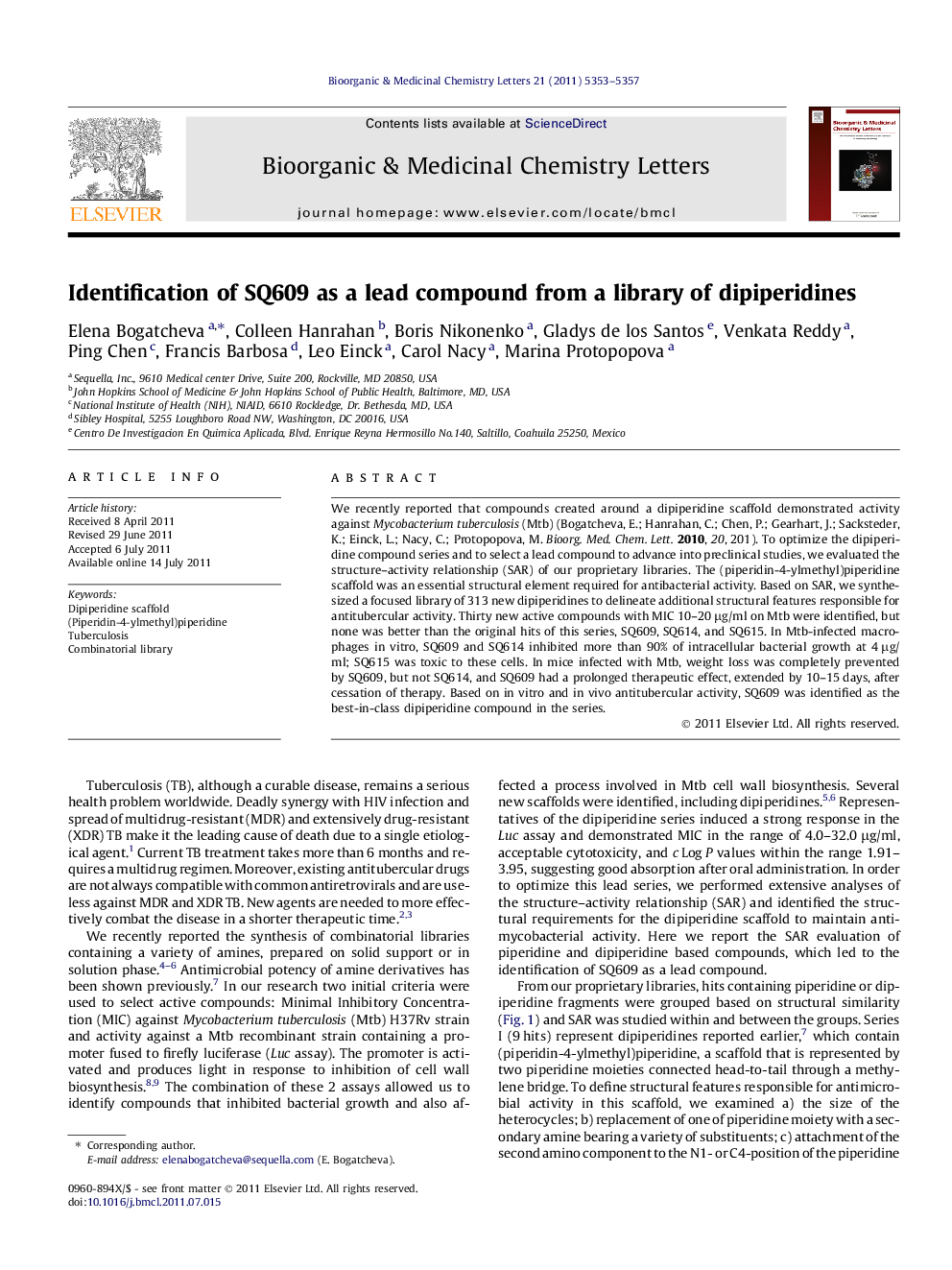| Article ID | Journal | Published Year | Pages | File Type |
|---|---|---|---|---|
| 10594057 | Bioorganic & Medicinal Chemistry Letters | 2011 | 5 Pages |
Abstract
We recently reported that compounds created around a dipiperidine scaffold demonstrated activity against Mycobacterium tuberculosis (Mtb) (Bogatcheva, E.; Hanrahan, C.; Chen, P.; Gearhart, J.; Sacksteder, K.; Einck, L.; Nacy, C.; Protopopova, M. Bioorg. Med. Chem. Lett.2010, 20, 201). To optimize the dipiperidine compound series and to select a lead compound to advance into preclinical studies, we evaluated the structure-activity relationship (SAR) of our proprietary libraries. The (piperidin-4-ylmethyl)piperidine scaffold was an essential structural element required for antibacterial activity. Based on SAR, we synthesized a focused library of 313 new dipiperidines to delineate additional structural features responsible for antitubercular activity. Thirty new active compounds with MIC 10-20 μg/ml on Mtb were identified, but none was better than the original hits of this series, SQ609, SQ614, and SQ615. In Mtb-infected macrophages in vitro, SQ609 and SQ614 inhibited more than 90% of intracellular bacterial growth at 4 μg/ml; SQ615 was toxic to these cells. In mice infected with Mtb, weight loss was completely prevented by SQ609, but not SQ614, and SQ609 had a prolonged therapeutic effect, extended by 10-15 days, after cessation of therapy. Based on in vitro and in vivo antitubercular activity, SQ609 was identified as the best-in-class dipiperidine compound in the series.
Keywords
Related Topics
Physical Sciences and Engineering
Chemistry
Organic Chemistry
Authors
Elena Bogatcheva, Colleen Hanrahan, Boris Nikonenko, Gladys de los Santos, Venkata Reddy, Ping Chen, Francis Barbosa, Leo Einck, Carol Nacy, Marina Protopopova,
